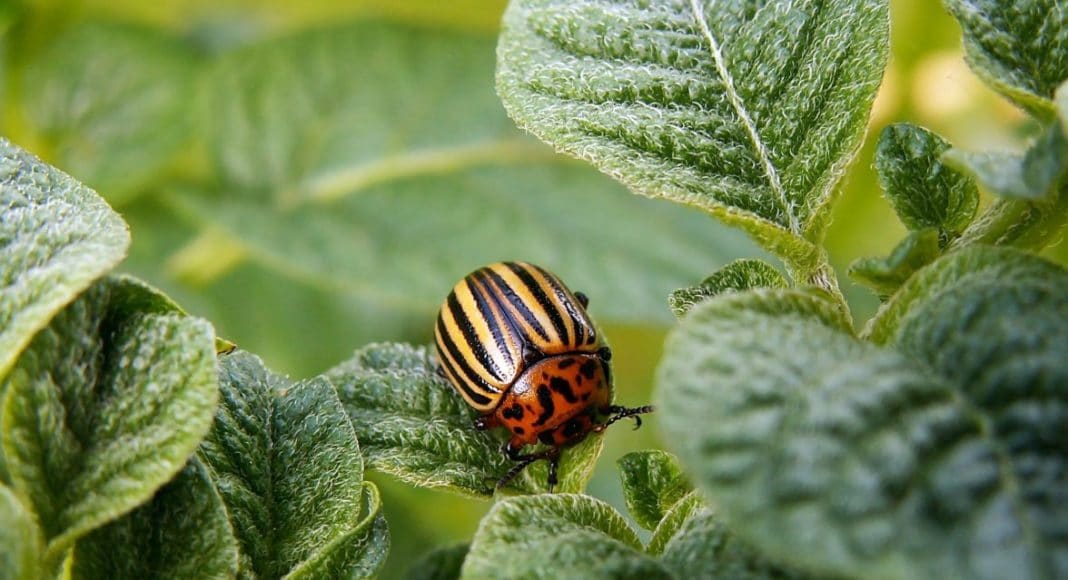- Neonicotinoids have been used in Ontario for 26 years to control the Colorado potato beetle (CPB) but relying on one mode of action at planting accelerates the development of resistance. Detection of CPBs hot spots in the province have been due to untreated areas in fields, the result of plugged nozzles, or beetles moving into the crop late in the season beyond the active life of the insecticide.
- Test any suspicious CPB populations with a dip test/spray test, which will tell you in 24 hours if the beetles are less susceptible or resistant.
- Actara (thiamethoxam) and Titan (clothianidin) are commonly used at planting as seed treatments or in- furrow treatments (Titan in-furrow is allowed until March 2023). Both insecticides will also control potato leafhopper and aphids. Potato flea beetles are controlled by Titan, but somehow, flea beetle control does not appear in the Actara label. Admire (imidacloprid) is a weaker molecule and does not provide control for as long as Actara or Titan.
- Use neonicotinoids at the high labelled rate at planting, either as a seed treatment or in-furrow. This should provide control for 60 days, long enough to act on the second generation of beetles, which usually emerges at the beginning of July. If you pre-cut and treat, deduct the number of days that the pre-cut seed was kept in storage before planting from the 60 days.
- If an insecticide is needed to control the second generation of beetles, use one with a different mode of action. Rotating modes of action is essential to managing insecticide resistance. Vayego (tetraniliprole) is a good option. It controls all the CPB stages as well as flea beetles and European corn borers. Vayego also suppresses aphids.
- Many of the other insecticide options are most effective on small larvae. Scouting is essential to time applications to when the CPBs are at this susceptible life stage. Also, many of the other insecticides have limited efficacy against other potato insects and most are not systemic in the potato plant, a property of the at-plant neonicotinoid insecticides that growers value.
- Eliminating volunteers will reduce the number of CPBs that subsist on untreated potato plants and move into the crop when they run out of food. Neonicotinoid activity in the treated crop might have run out by this time, and hungry adult beetles can cause severe defoliation.
- By all accounts, this will be the more expensive year to grow potatoes. Be vigilant. Effective CPB control is required to maintain sustainable potato production.
Related Articles
Top Contenders for Potato Pests and Diseases Across Canada for 2022











